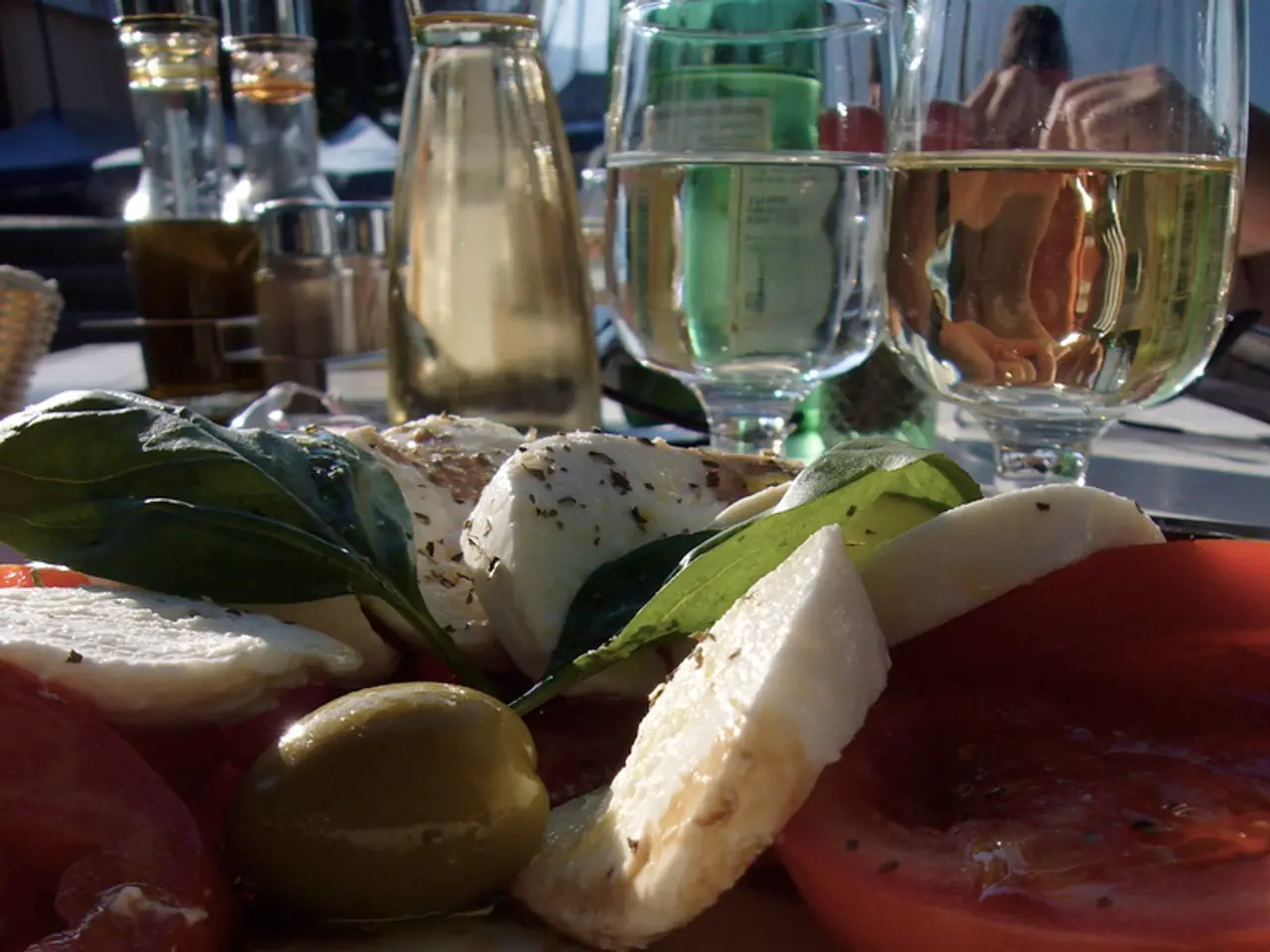Exploring the Essence of Terroir: A Private Mediterranean Wine Adventure
Exploring the Terroir of World-Class Wines
In the vineyards across various continents, unique characteristics and production processes shape the identity of some of the most renowned wines. Here's a journey through the stories of Brunello di Montalcino, Etna Rosso, Provence Rosé, Bandol Red, Priorat Red, Mallorca Red, Santorini Assyrtiko, and Turkish Aegean Wines.
Brunello di Montalcino
Hailing from the picturesque hills of Montalcino in Tuscany, Italy, Brunello di Montalcino is a prestigious red wine made from the Sangiovese grape, locally known as Brunello. Known for its deep ruby color, full body, high acidity, and complex aromas of cherry, plum, leather, and sometimes herbaceous or spicy notes, these wines often age well for many years, developing greater complexity.
Etna Rosso
Etna Rosso, a Sicilian red wine from the foothills of Mount Etna, showcases the unique terroir of its volcanic origins. Primarily made from Nerello Mascalese and sometimes Nerello Cappuccio, these wines offer medium to full body, bright acidity, and flavors of red berries, herbs, volcanic minerals, and sometimes smoky or earthy nuances.
Provence Rosé
The pale, delicate pink wines of Provence are emblematic of the Mediterranean lifestyle. Noted for their light body, brisk acidity, subtle fruit notes (often strawberry, peach, and citrus), and a characteristic mineral or saline finish, these rosés are refreshing and food-friendly.
Bandol Red
Bandol reds, from the Bandol appellation in Provence, are robust and age-worthy, primarily made with Mourvèdre grapes. These wines are characterized by deep color, firm tannins, rich dark fruit flavors (blackberry, plum), earthy and spicy notes, and often a gamey or rustic element.
Priorat Red
Priorat reds, from the Catalonia region in Spain, are powerful, concentrated wines typically based on Garnacha (Grenache) and Cariñena (Carignan) grapes. They display intense black fruit flavors, minerality from the slate soils, and strong tannins balanced by ripe fruit and alcohol.
Mallorca Red
Red wines from the Balearic island of Mallorca tend to be robust and fruit-forward, often made from native varieties like Manto Negro or international grapes like Cabernet Sauvignon. They typically show ripe red and black fruits, moderate acidity, and varying tannin levels depending on style.
Santorini Assyrtiko
Santorini Assyrtiko, a signature white wine from the Greek island of Santorini, is notable for its high acidity, mineral and citrus aromas, briny/saline character due to volcanic soils, and a crisp, fresh finish.
Turkish Aegean Wines
The Aegean region of Turkey produces diverse wines, both red and white, with varieties like Öküzgözü, Boğazkere, and native whites like Sultaniye. Red wines are often medium to full-bodied with red and dark fruit notes, moderate acidity, and spice. Whites tend to be fresh and aromatic.
Each of these wines reflects the unique characteristics of their respective regions, from the crumbling Galestro soils of Montalcino to the saline streaks in Mallorcan wines, and the cassis liqueur and gunflint minerality of Priorat wines. Each sip offers a taste of the land and its rich history, inviting us to explore the world of wine one glass at a time.
[1] Wine Folly [2] Wine Spectator [3] Decanter [4] Jancis Robinson [5] Vinous Media
1 The unique terroir and lifestyle of Montalcino's picturesque hills in Tuscany is reflected in the aged Brunello di Montalcino wines, which are perfect for those seeking complexity and flavors of cherry, plum, leather, and spices.
2 The Aegean region of Turkey offers diverse wines for travelers looking to taste the land's history, with medium to full-bodied reds featuring red and dark fruit notes reminiscent of the region's diverse culture.





